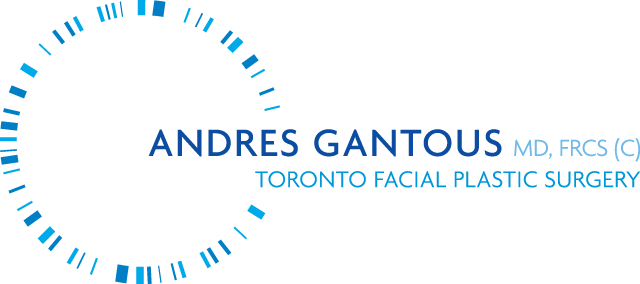When it comes to facial cosmetic procedures, cheek augmentation—also known as midface modification—is very often overlooked. Many patients and facial plastic surgeons tend to focus on the upper and lower part of the face because those areas are more likely to develop wrinkles. However, there are several valid reasons why patients might seek out cheek augmentation whether it’s in the form of fillers or cheek implants. Some patients are dissatisfied with their natural bone structure and want to create a more angular look. Others simply notice volume loss as they get older and want to restore their youthful appearance.
Whatever your reason is for wanting to augment your appearance, cheek implant surgery is a viable option that can easily be combined with other facial cosmetic procedures such as brow lifts, forehead lifts, rhinoplasty, otoplasty, and facelifts. Before you make the decision to have this procedure done, however, there are a few things that you should know about the preparation, the types of cheek implants, and the recovery period. Keep reading for all of the important information.

"*" indicates required fields
Types of Cheek Implants Used for Augmentation
Although people of all ages are usually good candidates, cheek implants are typically recommended for younger patients who want to find a permanent solution to fix the bone structures within their cheeks. Fillers are usually recommended for older patients who are dissatisfied with the signs of aging around the midface area, most prominently volume depletion that makes their cheeks look sunken in.
With that in mind, there are three types of cheek implants that you should know about:
Submalar Implants
The submalar is located just beneath the lower eye line at the very point where the cheekbone begins. Around your early to mid-40s, you might begin to notice volume depletion in this region as your fat cells begin to descend down toward your lower cheek and chin area. This results in the cheeks looking sunken in and the bottom of the face developing jowls over time. Submalar implants are an easy and affordable solution to this problem as they’re placed directly above where the cheekbones begin.
Malar Implants
The malar region is just below the submalar area. It’s basically where your cheekbone sits. Malar implants are less common than submalar implants and they’re more commonly requested by younger patients in their 20s and 30s. The purpose of malar implants is to create a sharper, more angular shape that results in a strong and more defined bone structure.
Combination
Although it’s uncommon, some patients might opt to have both procedures performed at once if they feel that their cheekbones aren’t well defined, and they’ve lost volume in their midface area. Combining both procedures essentially allows patients to have the best of both worlds in terms of more voluminous and structurally sound cheekbones.
What Happens During Cheek Implant Surgery?
One of the great aspects of this procedure is that the scarring is minimal and virtually invisible as the incisions are made from inside the mouth or around the lower eyelid depending on what type of cheek implant you’re getting.
Since this is typically an outpatient procedure, your facial plastic surgeon will administer a local anesthetic, unless you request general anesthesia for which you may be required to pay a little extra. There’s also no guarantee that the procedure or the cost of the anesthesia will be covered by your insurance, so that’s something you’ll have to work out with them beforehand.
If the idea of undergoing a surgical procedure makes you uncomfortable, you also have the option of getting an injectable filler instead, but keep in mind that unlike silicon cheek implants, these are not permanent because the substance will eventually be integrated with and absorbed by your body.
What Is Recovery Like after Cheek Implant Surgery?
Cheek implant recovery time is very minimal. Most patients can return to their regular activities after about one week, provided that they didn’t undergo any additional procedures at the same time. Of course, each case is different and you should discuss potential side effects with your facial plastic surgeon. During the first and second week, your doctor may advise you to refrain from strenuous activities such as exercise and heavy lifting.
Typically, patients might notice a little bit of inflammation, redness, and some minor bruising around the incision sites as they heal. If the side effects persist after one to two weeks, then you should report them to your doctor.
You’ll also be required to schedule a few follow-up appointments so that your doctor can guarantee that the incisions are healing properly and that the implants are still in place.
Choosing Cheek Implants vs. Fillers
Cheek implants are a viable option for patients who are dissatisfied with the current state of their facial structure and have no problem with undergoing a cosmetic surgery. The purpose of cheek implant surgery is to replace depleted volume loss in the midface area.
Cheek fillers are more applicable for older patients who want to reverse the signs of aging without having to undergo a surgical procedure. Some patients also suffer from medical conditions that make it inadvisable for them to undergo an elective procedure as it could exacerbate their pre-existing health issues.
What Are the Benefits of Cheek Augmentation Using Implants?
The benefits of silicon cheek implants are twofold: They’re permanent, which means that other than minor maintenance and a few follow-up appointments, you won’t have to have them redone later. They’re also completely reversible. If you don’t like the final outcome, you can ask your facial plastic surgeon to make adjustments or remove them entirely.
How Long Do Cheek Implants Last?
Silicon cheek implants are typically affixed to your existing bone structure with a screw, which means that they can last for a lifetime. The procedure itself can take up to one hour, but removing the implants or reshaping them can take about 10 minutes and 25 minutes, respectively.
Are you thinking about getting cheek implants or fillers in Toronto? Dr. Andres Gantous at Toronto Facial Plastic Surgery is one of the leading facial plastic surgeons in North America. As such, he’s performed numerous surgical and non-surgical procedures for patients from all over the world and he’s served as the keynote speaker at many national and international plastic surgery conferences. Contact us today to book your first consultation.

